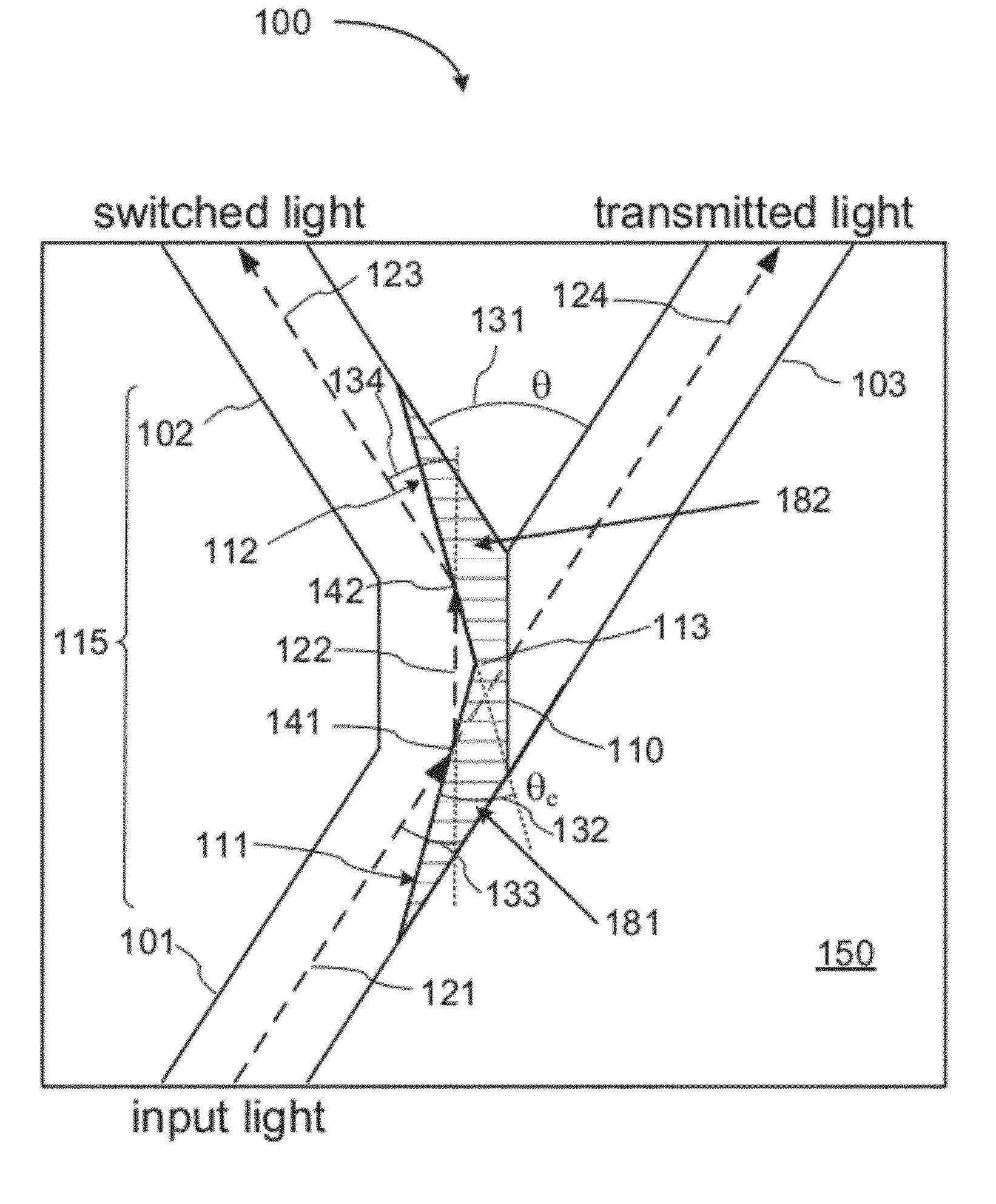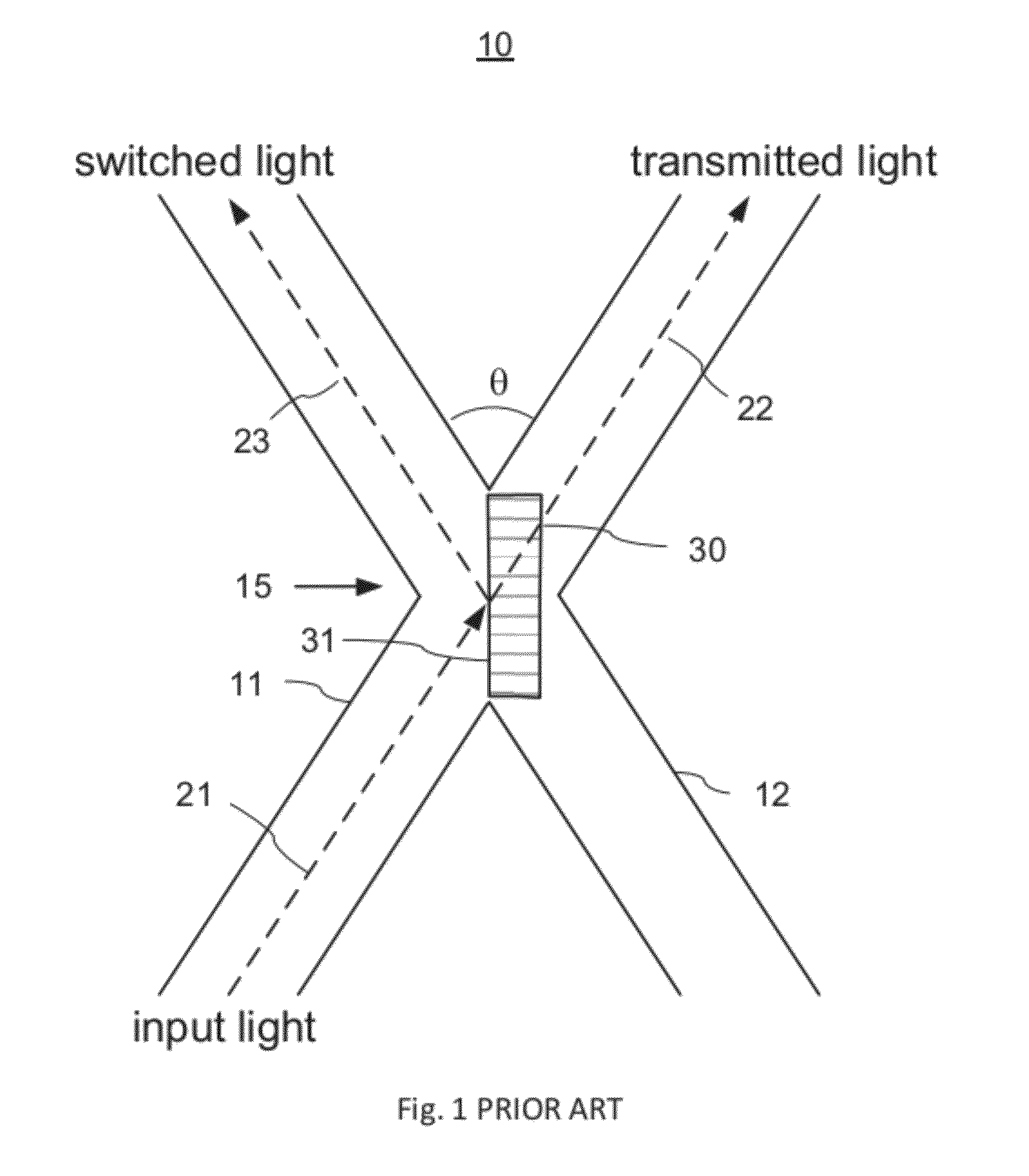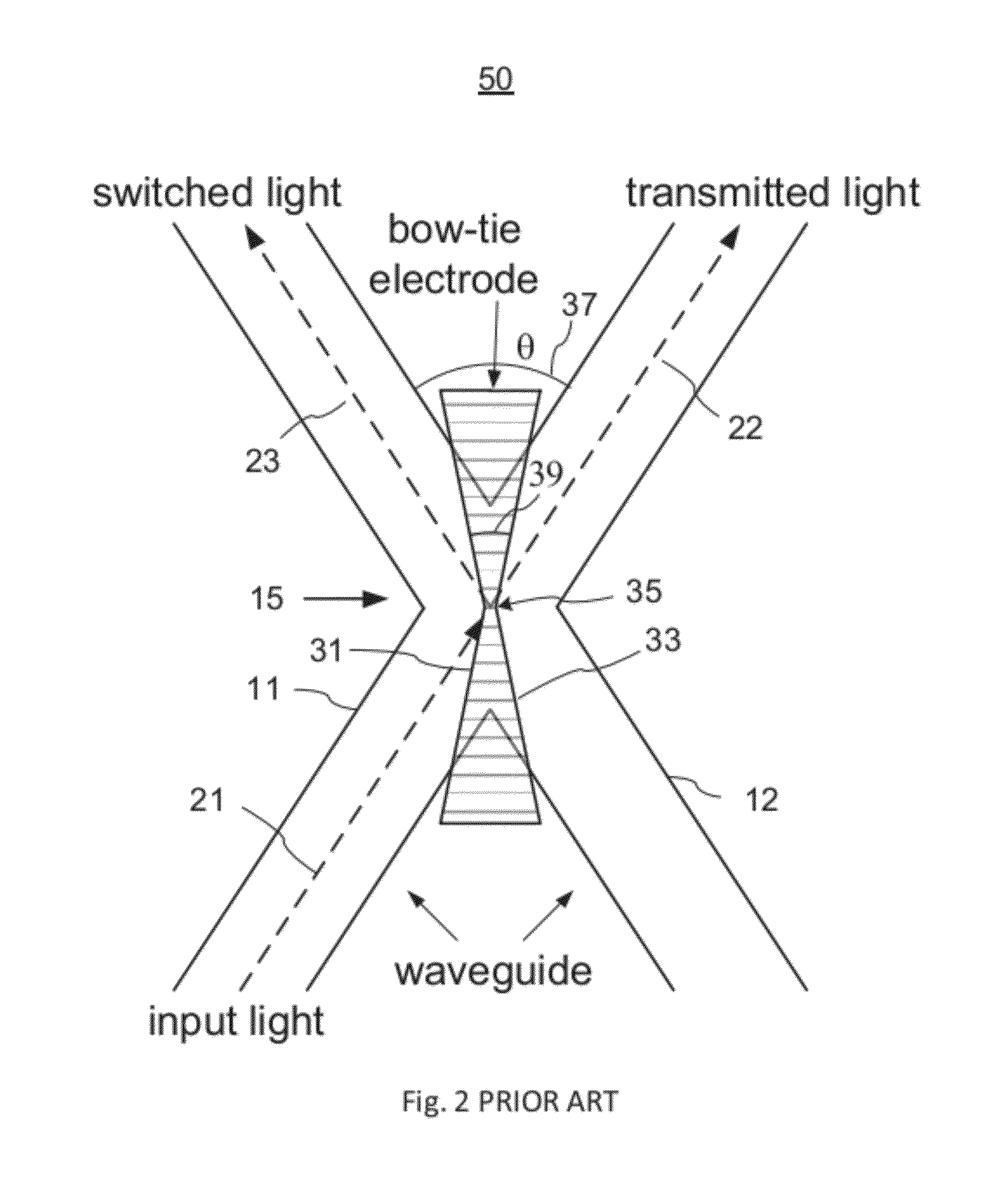Low power compact optical switch
a compact, optical switch technology, applied in the field of optical waveguide switches, can solve the problems of reducing the refractive index of the waveguide, the relative complexity of the semiconductor device, and the limit of the switching angle, and achieve the effect of reducing the change in the waveguide refractive index
- Summary
- Abstract
- Description
- Claims
- Application Information
AI Technical Summary
Benefits of technology
Problems solved by technology
Method used
Image
Examples
Embodiment Construction
[0028]With reference to FIG. 3, there is illustrated, in a plane view, an optical switching structure (OSS) 100 employing a double-reflection electrode geometry according to an embodiment of the present invention. In the shown embodiment the OSS 100 utilizes a ‘Y’-shaped waveguide structure that is well known in the art. It has an input waveguide 101, hereinafter also referred to as the first input waveguide, a first output waveguide 103, and a second output waveguide 102. A waveguide branching region 115 optically couples the first input waveguide 101 to one of the output waveguides 102 and 103. At the waveguide branching region 115, the second output waveguide 102 is oriented at angle θ131 with respect to the first output waveguide 103 and the first input waveguide 101. The angle 131θ is referred to herein as the branching angle, crossing angle or light switching angle. The waveguide branching region 115 may be viewed as, or includes, a common, or shared, portion of the input and ...
PUM
 Login to View More
Login to View More Abstract
Description
Claims
Application Information
 Login to View More
Login to View More - R&D
- Intellectual Property
- Life Sciences
- Materials
- Tech Scout
- Unparalleled Data Quality
- Higher Quality Content
- 60% Fewer Hallucinations
Browse by: Latest US Patents, China's latest patents, Technical Efficacy Thesaurus, Application Domain, Technology Topic, Popular Technical Reports.
© 2025 PatSnap. All rights reserved.Legal|Privacy policy|Modern Slavery Act Transparency Statement|Sitemap|About US| Contact US: help@patsnap.com



